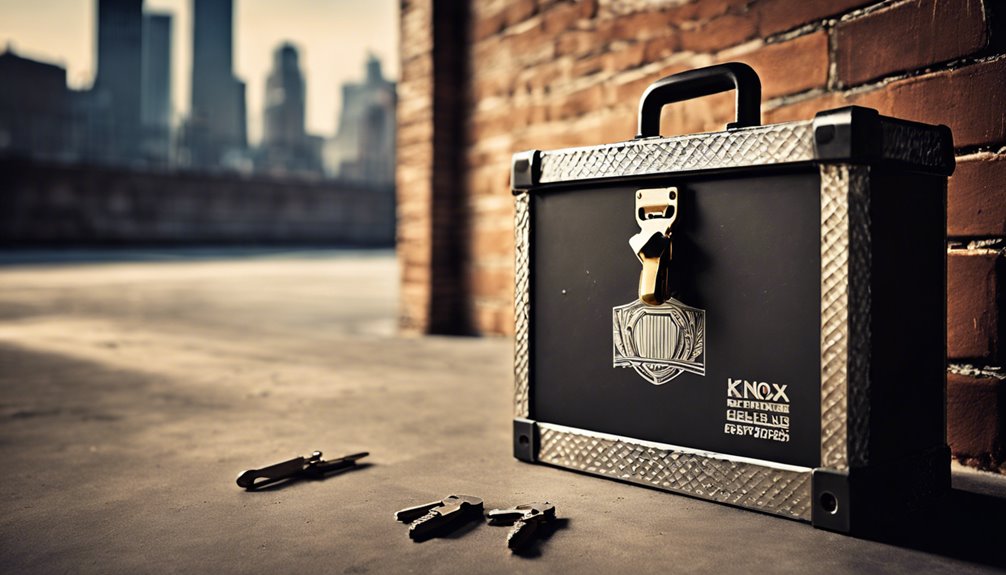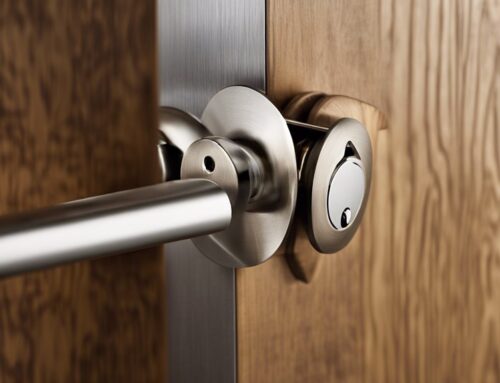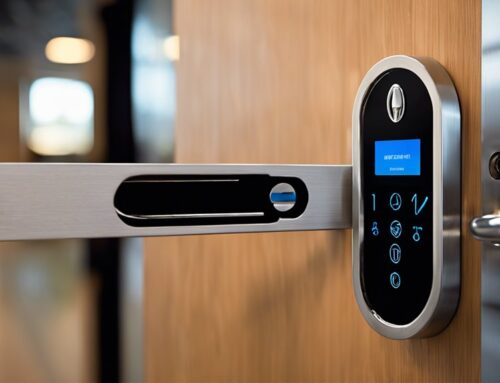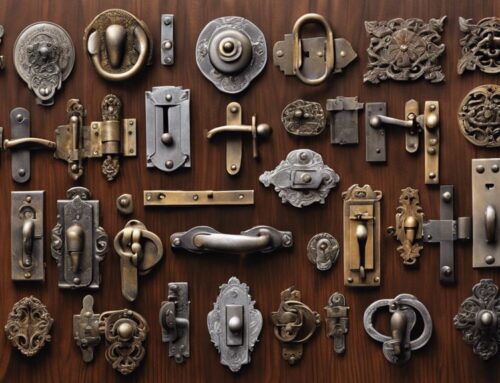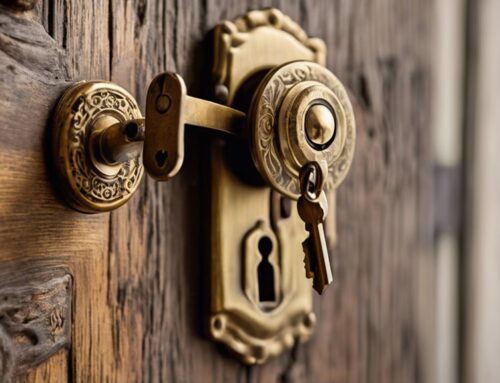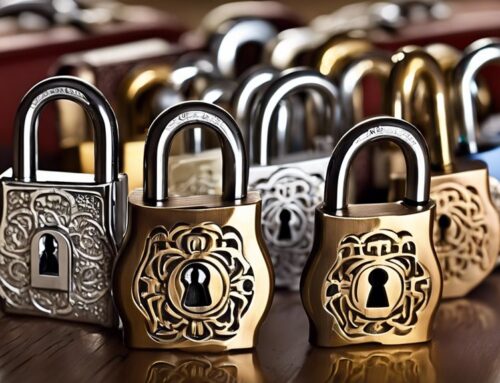When you think about emergency preparedness, you might not immediately consider Knox Box Systems, but these tools play a vital role in enhancing safety for property owners and first responders alike. Originating from the necessity for rapid access during crises, their evolution is marked by impressive security features like tamper-resistant materials and high-security locks. However, understanding their history and the specific mechanisms that govern their operation can reveal even more about how they safeguard your property. So, what are the essential aspects you need to know to guarantee you’re fully prepared?
Key Takeaways
- Knox Box Systems provide secure access to keys and emergency information, enhancing safety for occupants during emergencies.
- The systems are built from durable materials and feature tamper-resistant designs to ensure longevity and protection against vandalism.
- Various models and customization options address specific security needs, including high-security locks and advanced access control mechanisms.
- Installation and regular maintenance best practices ensure functionality and compliance, fostering trust between property owners and emergency responders.
- While beneficial, inadequate security measures can lead to unauthorized access, underscoring the importance of robust security features.
Overview of Knox Box Systems
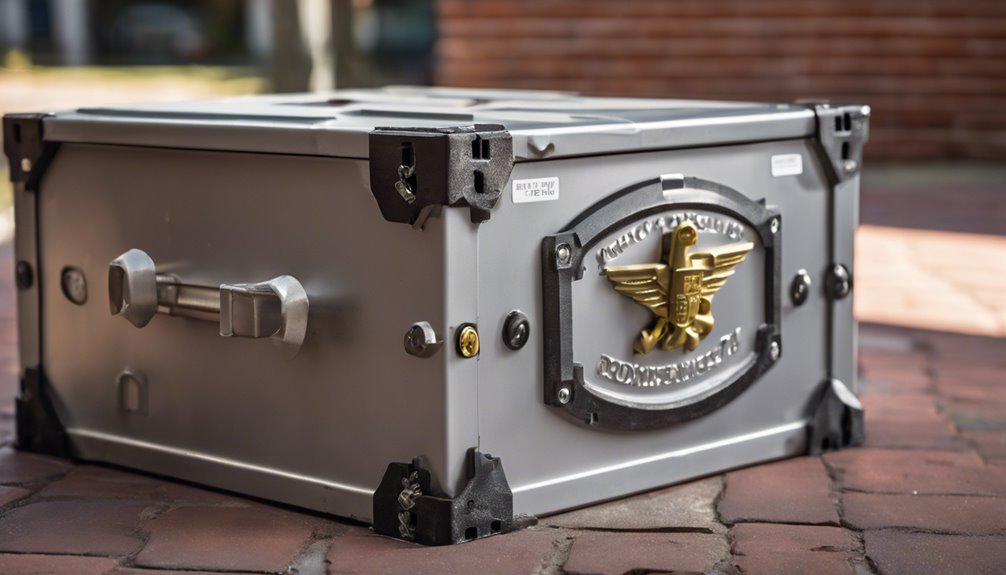
Knox Box systems are essential tools for emergency responders, as they provide secure, quick access to buildings in urgent situations. These lock boxes securely store keys and critical documents, enabling first responders to bypass lengthy entry delays that could jeopardize lives.
Installed at designated locations, typically near entry points, they’re easily identifiable by emergency personnel. Most systems utilize durable, weather-resistant materials to guarantee longevity and reliability.
The boxes accommodate various key sizes and formats, supporting different building types and security systems. By standardizing access protocols, you enhance response efficiency and safety.
Equipping properties with Knox Box systems can considerably reduce response times, ultimately benefiting occupants and responders alike in emergency scenarios.
Key Security Features
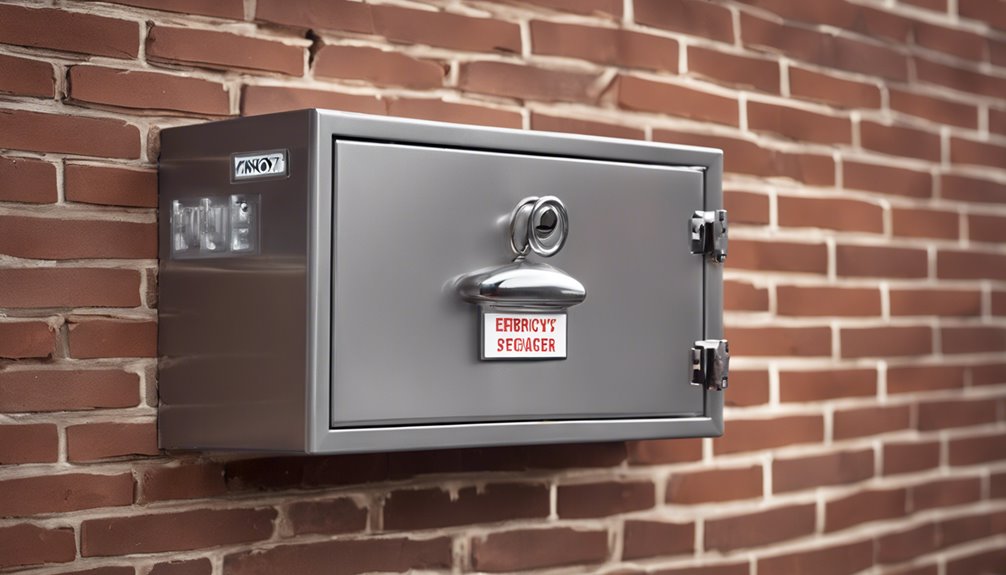
While guaranteeing access during emergencies is critical, the security features of Knox Box systems play an essential role in safeguarding the keys and sensitive information they contain.
These systems utilize robust, tamper-resistant materials, guaranteeing physical integrity against intrusion or vandalism. Secure lock mechanisms, often featuring high-security ratings, provide an extra layer of protection against unauthorized access. Upgrading locks to meet current safety standards is essential for enhanced security measures that can significantly reduce potential risks.
Additionally, many models include encryption protocols to protect sensitive data transmitted during operation. User authentication processes, like unique access codes, guarantee only authorized personnel can retrieve keys.
Regular maintenance and audits further enhance security, identifying potential vulnerabilities before they can be exploited. The use of effective lockbox systems is crucial for ensuring both security and convenience in various situations.
Key Control Mechanisms

When managing Knox Box systems, it’s essential to implement key control mechanisms for effective security.
You’ll want to establish accountability for master keys, utilize access control solutions, and maintain an audit trail for all key transactions. Additionally, it’s important to consider legal considerations when re-keying locks, as improper handling can lead to disputes with tenants. These practices enhance safety and guarantee that only authorized personnel access critical areas. Ensuring that all locks are properly re-keyed regularly helps in maintaining the integrity of your security measures.
Master Key Accountability
To maintain security and guarantee effective emergency response, implementing robust master key accountability is essential. A well-structured master key system enhances security management by streamlining access for authorized personnel while restricting entry to others.
You need precise tracking and management of every master key to mitigate the risks of unauthorized access. Establish a clear protocol for key issuance, confirming that each keyholder’s responsibilities are defined and documented.
Regular audits should be conducted to verify that all keys are accounted for, and discrepancies must be addressed immediately. Utilize advanced key control systems that provide real-time monitoring and reporting to enhance oversight.
Additionally, consider periodic training sessions for keyholders to reinforce the importance of accountability. Through these measures, you ascertain that every key is managed with precision, maximally safeguarding your facility’s security and operational efficiency. Implementing a robust master key system can also involve rekeying existing locks to ensure only authorized individuals have access.
Access Control Solutions
Effective master key accountability sets the foundation for robust access control solutions.
By implementing a structured key control system, you can greatly mitigate unauthorized access risks. Use electronic locks that allow for customizable access permissions, ensuring only the right personnel can enter restricted areas. Consider employing efficient lock re-keying strategies to promptly manage key transitions and ensure security remains intact.
Incorporate time-based access controls so that you can designate specific hours for entry, further tightening security. Regularly reassess and adjust these controls in response to personnel changes or security needs.
Additionally, consider integrating biometric authentication methods, such as fingerprint recognition, for an even higher security standard. Regular maintenance and the option for lock re-keying also help maintain system integrity, making it a critical aspect of access control solutions.
Audit Trail Importance
An audit trail serves as an essential mechanism in key control systems, providing a transparent record of access events.
This feature tracks who accessed keys, when, and for what purpose, enabling you to identify patterns or discrepancies in usage.
By implementing a detailed audit trail, you reinforce the integrity of your security protocols and enhance accountability among authorized personnel.
Additionally, in the event of a security breach, you’ll have an extensive log that aids in thorough investigations.
Such information is invaluable, allowing swift remedial action and minimizing potential risks.
Prioritizing an audit trail not only safeguards your assets but also instills confidence among stakeholders regarding the efficacy of your key control measures.
Installation and Best Practices
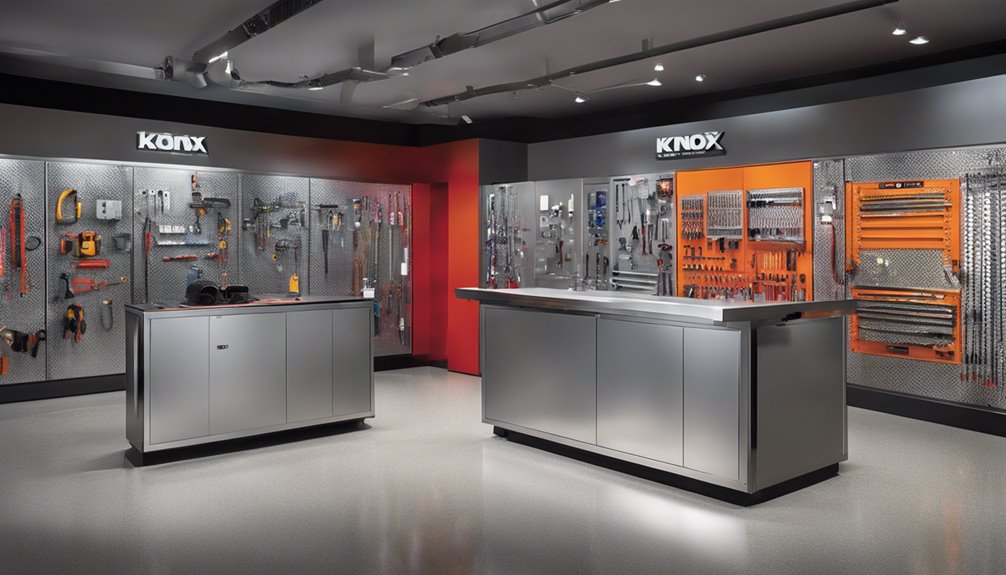
When installing Knox Box systems, proper placement and adherence to best practices are crucial for guaranteeing rapid access for emergency responders. Follow these guidelines to optimize effectiveness:
- Location: Install the Knox Box at a height of 3-5 feet, near the main entrance, guaranteeing visibility for first responders.
- Accessibility: Place the box in a location free from obstructions, allowing quick access during emergencies.
- Secure Mounting: Use appropriate hardware to securely mount the box to a sturdy surface, preventing tampering or theft.
Adhering to these best practices not only enhances safety but also fosters trust between property owners and emergency personnel.
It’s important to regularly review and maintain the system to guarantee ongoing functionality and compliance with your local fire department’s requirements.
Benefits of Knox Box Systems
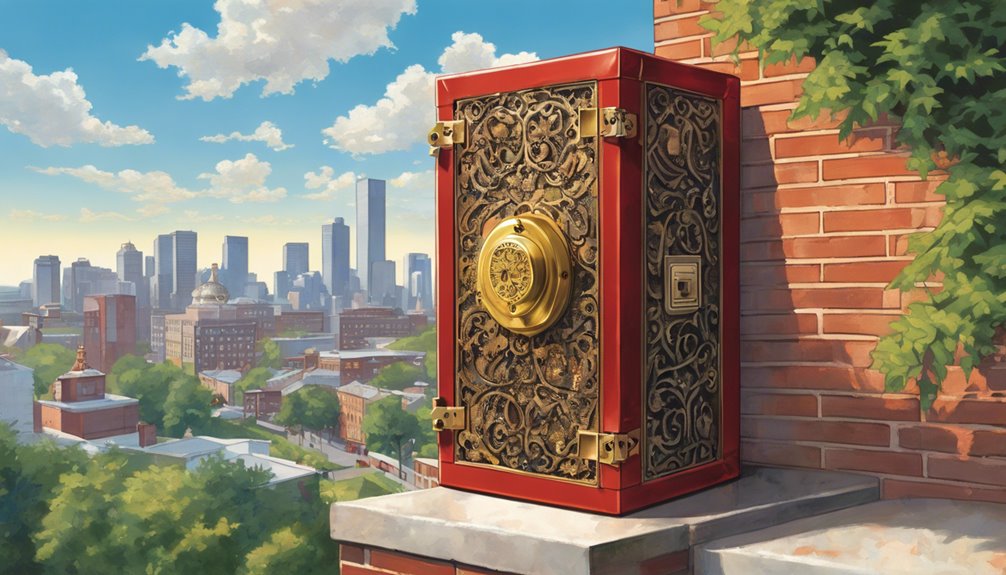
After ensuring proper installation and adherence to best practices, you can fully appreciate the numerous benefits Knox Box systems offer.
These secure boxes allow first responders swift access to critical building keys and emergency plans, greatly reducing response times during crises.
With Knox Box systems, you enhance safety for occupants by enabling rapid entry without damage to property. The ability to limit access to authorized personnel further bolsters security, as it minimizes the risk of unauthorized entry.
Additionally, knowing that your facility is prepared for emergencies creates peace of mind for both occupants and management.
Investing in Knox Box systems isn’t just a precaution; it’s a commitment to proactive safety measures relied upon throughout various emergencies.
Potential Risks and Challenges
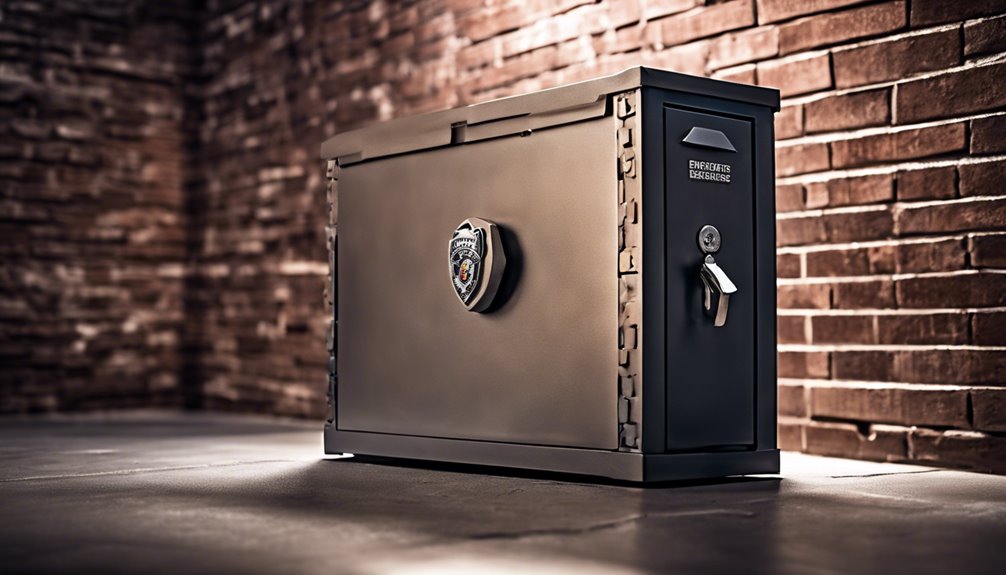
- Unauthorized Access: If proper security measures aren’t in place, unauthorized personnel may gain access to sensitive areas with the keys stored inside the box.
- Vulnerability to Tampering: Physical Knox Boxes can be subject to tampering, which could lead to compromised contents and delay emergency services.
- Maintenance Challenges: Regular maintenance is essential; a malfunctioning lock or damaged box could prevent first responders from accessing necessary tools when every second counts. Additionally, loose locks pose significant risks that could compromise the effectiveness of the Knox Box system.
Product Variants and Options
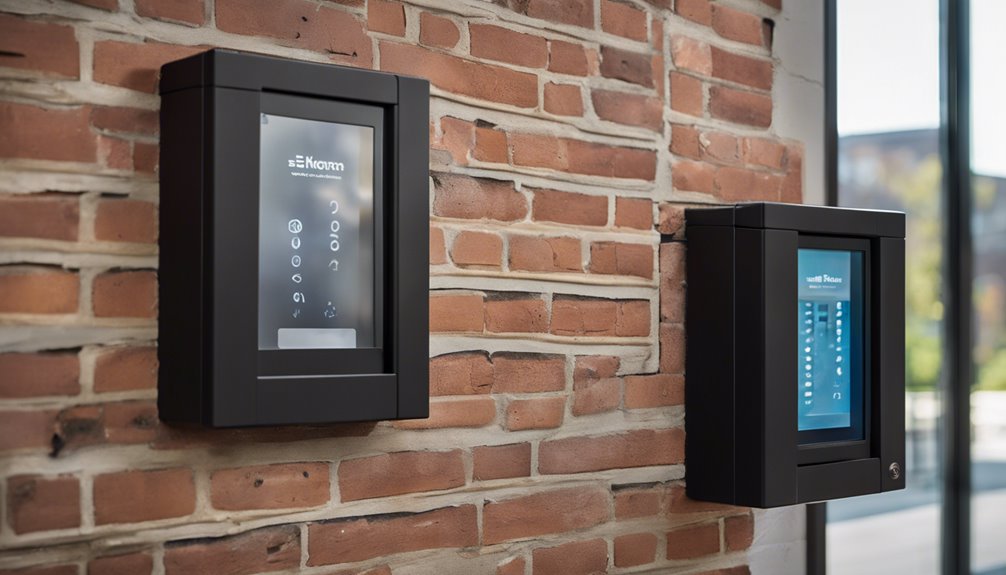
When considering Knox Box systems, you’ll find a range of variants tailored to different application needs.
These options include various security features, enhancing your ability to protect essential access points.
Understanding these products will help you choose the best solution for your specific safety requirements.
KnoxBox Variants Overview
Understanding the different Knox Box variants is essential for selecting the right system to meet your safety and access needs.
Knox Box offers several options tailored for various applications:
- Standard Model: Designed for residential and small business use, featuring basic lockbox access.
- Commercial Model: Tailored for larger facilities, offering more storage space and optional key retention features.
- Wall-Mounted Model: Ideal for external installations, providing durable construction and weather-resistant capabilities for high-traffic areas.
Choosing the right Knox Box variant considers your specific security requirements, environment, and accessibility needs.
Each model provides a unique set of features designed to optimize safety and guarantee rapid access for emergency responders.
Proper selection enhances response efficiency and safety.
Security Options Available
Knox Box systems come equipped with multiple security options to fit various needs and settings. You can choose from different locking mechanisms, such as tamper-proof designs, which prevent unauthorized access. Enhanced digital options include keypad and RFID entry, allowing for controlled access without physical keys. High-security locks, unlike standard locks, feature hardened materials that resist picking and drilling, making them an excellent choice for maximizing security.
Additionally, you can integrate advanced alarm systems that notify emergency responders if unauthorized attempts are detected. For specific applications, there are custom variants featuring weather-resistant housing and secure mounting options, ensuring durability in diverse environments.
You’ll also find configurations that provide visibility into the box’s status, letting you know if it’s been accessed. By evaluating these security features, you can select the Knox Box system that best meets your operational requirements and enhances safety. Moreover, incorporating elements like high-security locks can further bolster the overall security of your premises.
Frequently Asked Questions
How Often Should Knox Boxes Be Inspected for Security?
You should inspect Knox boxes at least twice a year to guarantee their security and functionality.
Regular checks help identify any wear and tear or potential vulnerabilities. It’s crucial to verify that the locking mechanisms work properly and that the boxes are securely mounted.
Additionally, confirm that contents, like keys and emergency contact information, remain current and accessible.
This proactive approach minimizes risks and maintains the integrity of your emergency response system.
What Happens if the Master Key Is Lost or Stolen?
If the master key is lost or stolen, immediate action is vital to maintain security.
You’ll need to change the locking mechanism as soon as possible to prevent unauthorized access.
Notify relevant personnel about the incident, and review your security protocols to identify any vulnerabilities.
Additionally, consider implementing a more secure key management system to prevent future issues.
It’s important to act quickly to safeguard sensitive areas and protect confidential information.
Can Knox Boxes Be Used in Residential Buildings?
Yes, Knox boxes can definitely be used in residential buildings. They provide a secure method for emergency responders to access properties quickly during crises.
You can install these systems to store keys safely, allowing authorized personnel to retrieve them without damaging entry points. This feature becomes especially crucial in multi-unit dwellings, ensuring safety while providing rapid access in emergencies.
Are Knox Boxes Compatible With All Alarm Systems?
While you might think all alarm systems work seamlessly together, Knox boxes aren’t universally compatible with every type. Most systems integrate well, but you should always consult your specific alarm provider for compatibility details.
It’s essential to guarantee both your alarm and Knox box meet local fire and safety regulations. By doing this, you enhance security and improve emergency access, making certain that first responders can reach your property without delays when every second counts.
What Is the Warranty Period for Knox Box Products?
The warranty period for Knox Box products typically spans five years from the date of purchase.
During this time, any defects in material or workmanship are covered, ensuring you receive a reliable product.
It’s essential to register your product after purchase to activate your warranty and streamline any future claims.
Always refer to your specific product documentation for detailed terms, as conditions may vary based on the model or additional features included.
Conclusion
To sum up, Knox Box Systems are indispensable guardians of safety, bridging the gap between property security and emergency responsiveness. By incorporating advanced security features and key control mechanisms, these systems not only protect your property but also enhance the efficiency of first responders. While challenges exist, the benefits far outweigh them, ensuring that when seconds count, you’ve got a reliable solution at your fingertips. Choose wisely, and you’ll have peace of mind, knowing safety’s just a key turn away.

